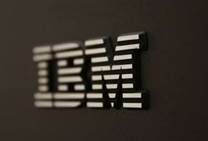The Internet of Things is an opportunity to bring designers closer to the customer but understanding the consequences of connected systems will be a challenge, industry observers warn.
Diego Tamburini, the Seattle based Manufacturing Industry Strategist at design company Autodesk, sees the Internet of Things representing the merging of the physical and software worlds.
“What’s changing is that now the addition of software, electronics, networking and communication is breeding into objects that were once purely mechanical,” he said.
“The example I like to use is the door lock. There are a couple of companies making door locks that connect to the internet, so all of a sudden the game changes. Now you can design applications to operate on top of the door lock.
"This is an opportunity to enhance the functionality of the product. I love this example – what is more mundane than a door lock and how do you differentiate it?”
Selena Griffith, Senior Lecturer in the School of Design Studies at the University of New South Wales’ College Of Fine Arts, agrees.
She sees IoT changing the way she teaches her students.
"Designers are interested in behaviour, both in changing the way people behave and in the way to make things easier,” she said.
However, she noted that the fast changing world of connected devices is presenting a challenge for those educating the next generation of designers.
“Students bring their knowledge to class and we build our teaching around that.”
For Griffith, educating young designers is about providing them the framework that lets them explore while understanding the context and the application of established principles.
“Young designers should be open and willing to embrace any new or interesting technologies,” she said.
“Because everything is moving so fast. You have to be on top of these things.”
Designing for a world of connected devices adds more complexities.
“The Internet of Things promises to make things easier but on the flip side we’re creating complex systems that no-one can expect to understand," Griffith said.
"The question is how do we balance the two.”
The interdependence of the Internet of Things is something that concerns Tamburini as well.
“One important thing that is happening with things being connected is we are not just designing things that function in a vacuum. We’re increasingly designing members of a larger ecosystem," he said.
“Now we have to think of how a product will have to connect to other products and how they will collectively perform a function."
Ultimately Tamburini believes the greatest benefit for the design industry from the IoT will be a greater insight in how their work behaves in the marketplace.
“Designers will have much more understanding of how their products perform in the wild,” he added.







.png&h=141&w=208&c=1&s=1)
